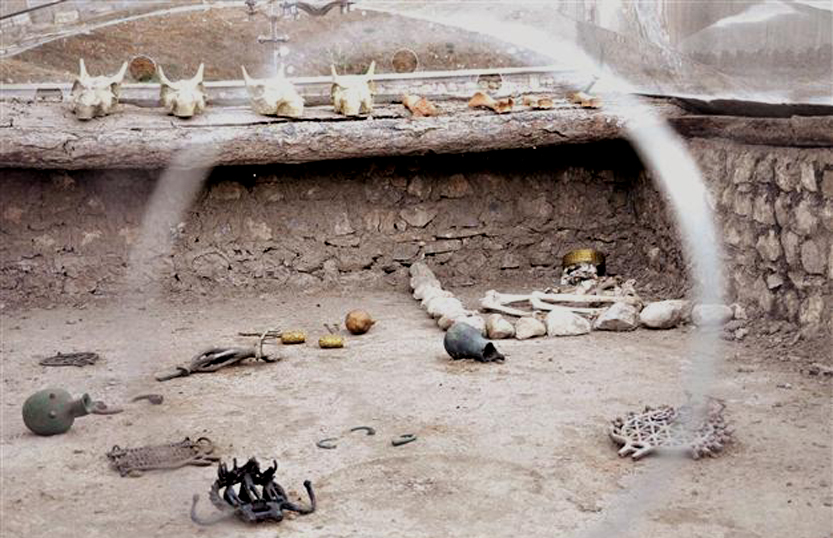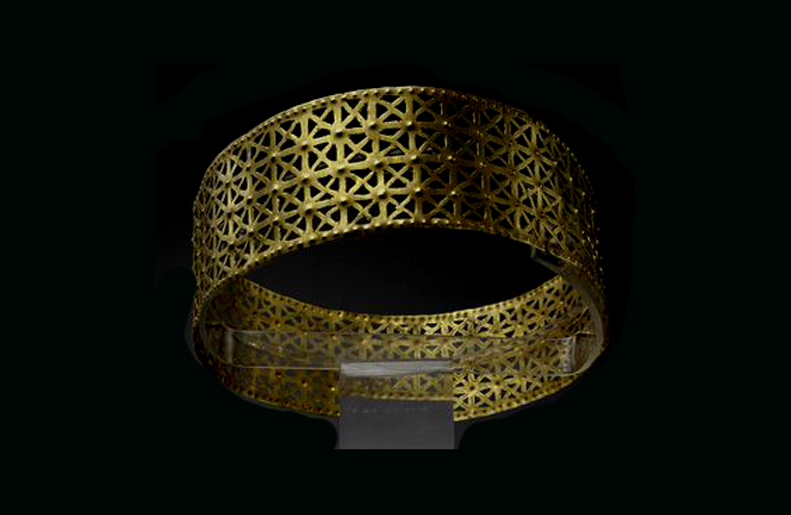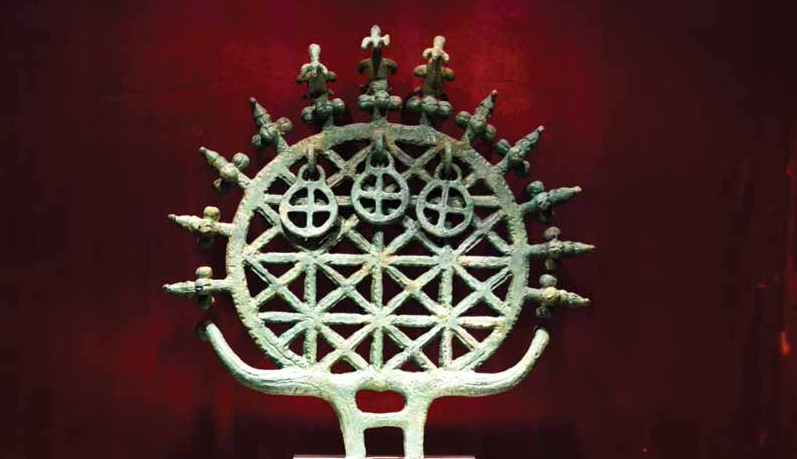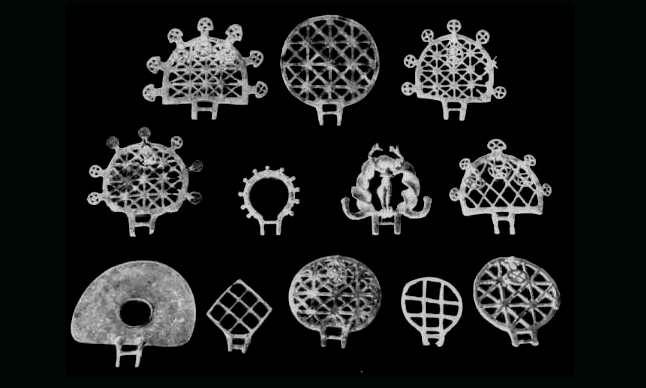It looks like you're using an Ad Blocker.
Please white-list or disable AboveTopSecret.com in your ad-blocking tool.
Thank you.
Some features of ATS will be disabled while you continue to use an ad-blocker.
22
share:
The site of Alaca Hoyuk in Central Anatolia is considered by most experts to relate to
the Hittite City of Arinna, the cultic centre of their Sun Goddess, i want to look here at the artifacts from the pre-Hittite 3rd millenium BC Royal
Tombs which reinforce that suggestion and also of course make the case that it had long preceded the Hittites as such, who merely adopted the name of
the land of Hatti
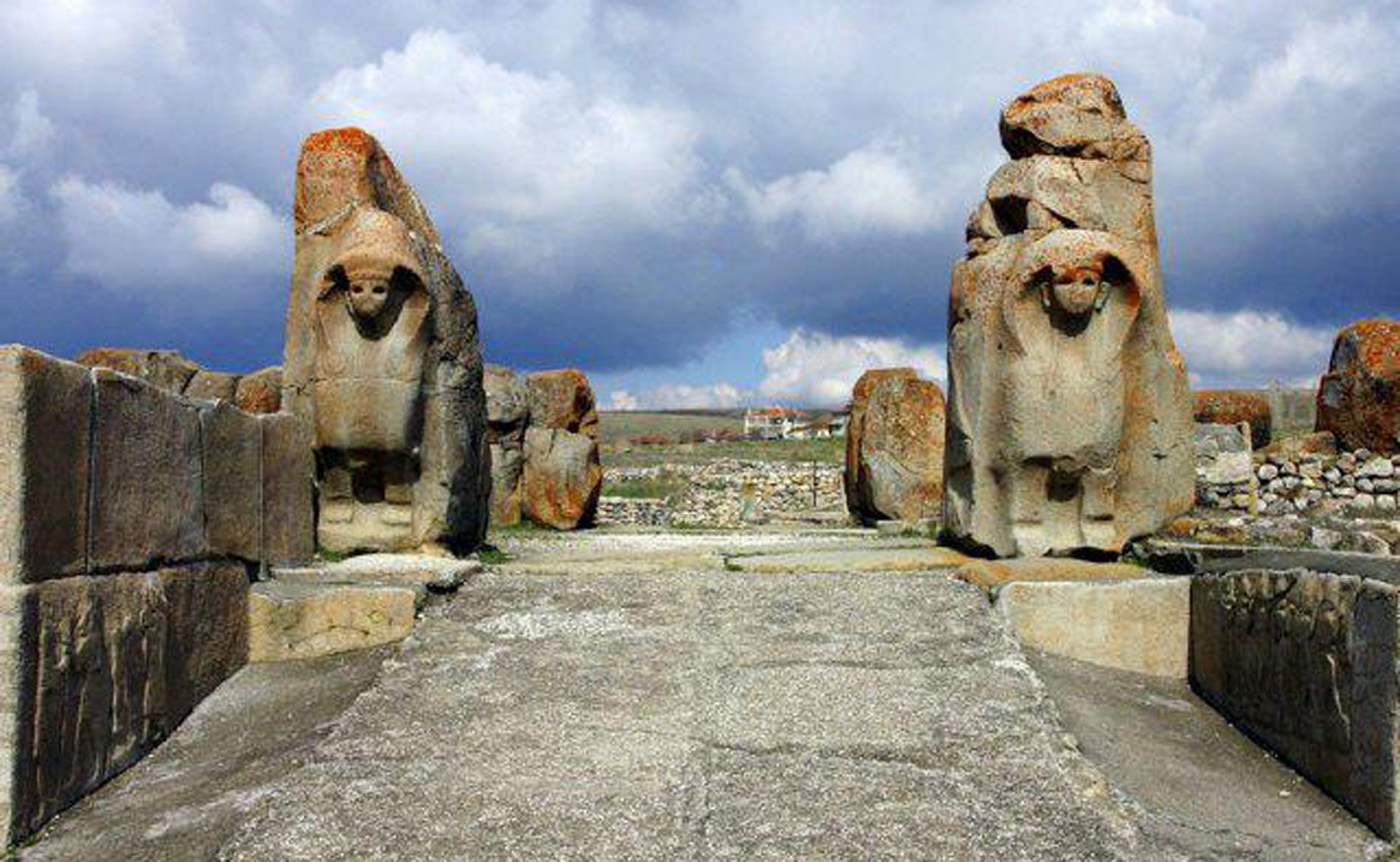
Given that Arinna was the Hattic counterpart to the Hurrian Alanni, meaning The Lady, i also want to reinforce the case that i made here that Arinna/Allani was the Goddess of the Earth energy matrix.
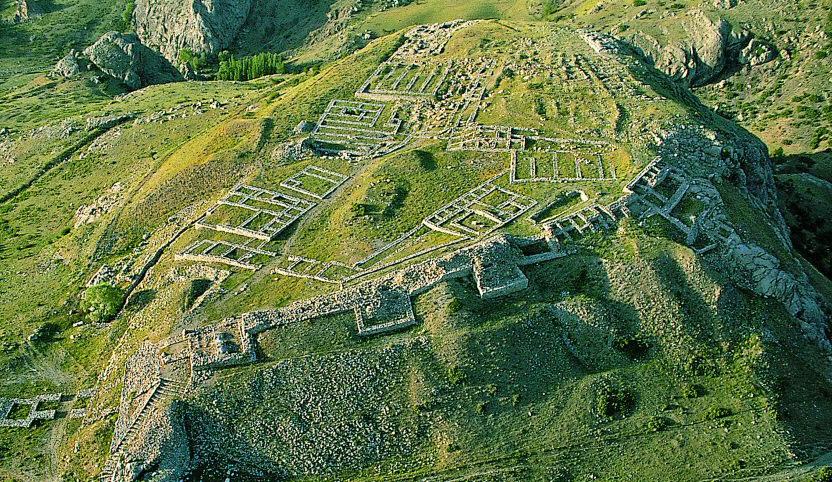
The City of Arinna then like many Hattic cities occupied a splendid site and was considerable in extent, dating back to the 4th millenium, 14 Royal burials have so far been excavated within it.
The over riding theme of many of the metal artifacts is that of the grid like matrix, including upon the Royal Diadems as seen above, but also note worthy on the artifacts considered to have been mounted on the front of sacred carts or chariots, that are considered in some sense solar disks, it is more likely given the cult of Arinna that these represented the flow of her internal energies across the Earth.
Given that metals were sourced from within the Earth then her cult also related to that of metallurgy, in particular Gold, and were her counterpart Isharah would have represented Silver, in general many of the primary Deities could be equivalent with metals such as Istar with copper.
In general the Hattic matrix is configured at eight directional which also was the sign in terms of DINGIR for Divinity itself, the finest expression of this would be were this equated with the four planets of the inner and outer solar system, were the Anatolian Heptad also takes into account the Earth or Moon and at it's centre is understood the Sun, but there were obviously qualifications and variations on that given the lack of visibility of the two outermost planets.
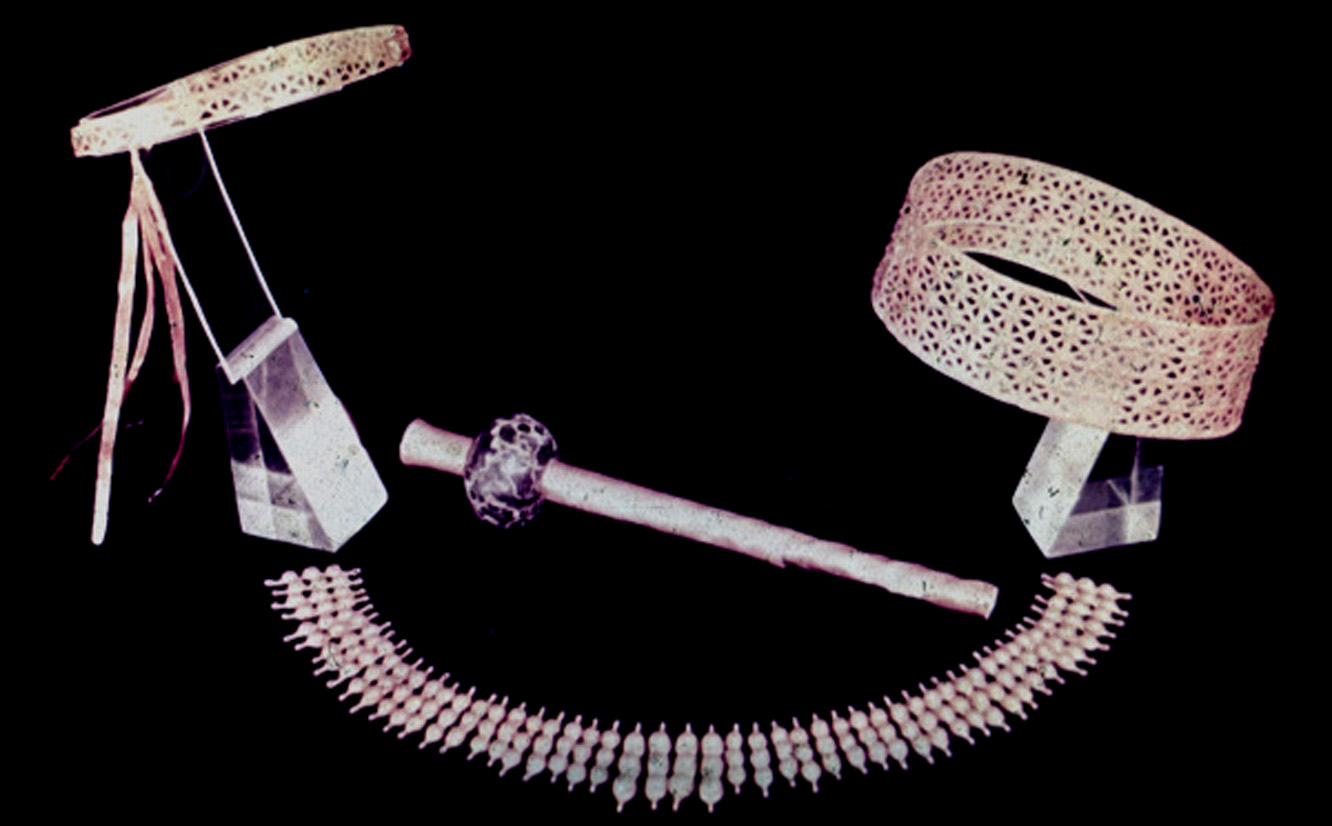
There are variations on the matrix pattern including a use of the Swastika motif, which is interesting as i consider that to relate to Ursa Major and the rotation of the Heavens around Celestial North, though that is actually the rotation of the Earth, and were the chariot itself was the sign in this region for Ursa Major.
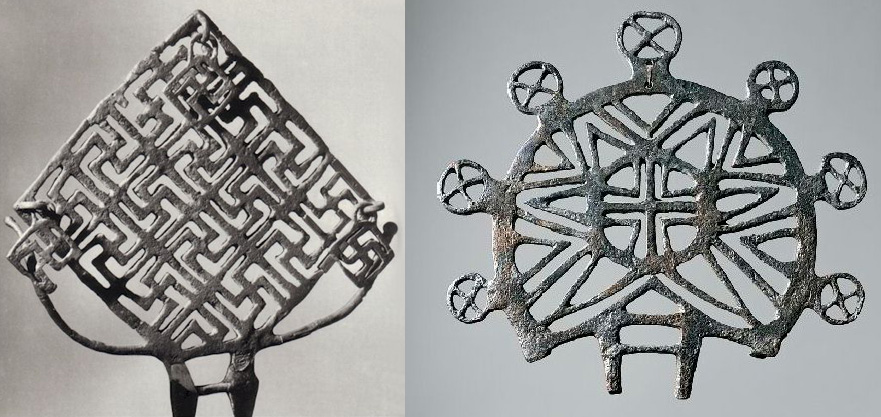
The usage of a six pointed star would also have celestial associations with regards to Jupiter regularly marking out sub-divisions of the ecliptic plane towards a harmonious twelve relating to the constellations, six above the horizon and six below, in general then though i consider the disks relating to the Earth that is in conjunction with the rotation of the Heavens and the ecliptic plane passing through the seasons, the Earth in it's Celestial context.

In many cases the deer is also seen in conjunction with the matrix, or also simply the deer, the reason for that is the deer representing the spirit and also being associated with path finding, thus in a sense deer-guided chariots, this was one of the connections noted from Britain were i considered Ellen/Alauna/Allani;
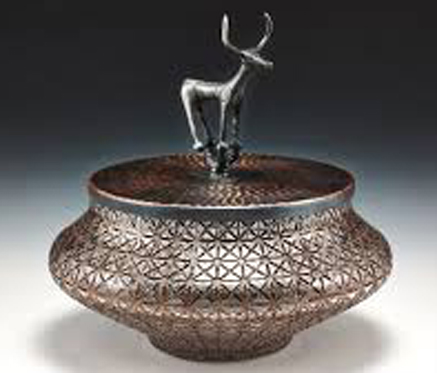
In conclusion then it goes without saying really that this spiritual matrix was considered wholly benevolent, unlike some which represent cultural opposition, and that it was also considered all pervasive, yet ever elusive...

Given that Arinna was the Hattic counterpart to the Hurrian Alanni, meaning The Lady, i also want to reinforce the case that i made here that Arinna/Allani was the Goddess of the Earth energy matrix.
Arinna was the major cult center of the Hittite sun goddess, known as d UTU URU Arinna "sun goddess of Arinna She was considered to be the chief deity in some source, also perceived to be a paramount chthonic or earth goddess.

The City of Arinna then like many Hattic cities occupied a splendid site and was considerable in extent, dating back to the 4th millenium, 14 Royal burials have so far been excavated within it.
The burials have been perceived collectively as ‘royal’ on account of their ostentatious gold, silver, electrum, tin-bronze,arsenic-copper, lead, iron, and semi-precious stone funerary offerings
The standards and figurines, which represent some of the most elaborated metallurgical craftsmanship in Bronze Age western Asia,do not find comparanda in contexts outside of north-central Anatolia
The forms may have been created to be consumed in the burials they were found in.The fundamental innovation at Alaca höyük is that metal forms had become imbued with sacred associations.
The over riding theme of many of the metal artifacts is that of the grid like matrix, including upon the Royal Diadems as seen above, but also note worthy on the artifacts considered to have been mounted on the front of sacred carts or chariots, that are considered in some sense solar disks, it is more likely given the cult of Arinna that these represented the flow of her internal energies across the Earth.
Put another way, aesthetically embellished objects signal ritual contexts and ritual utilization. It is as if a nonmaterial or spiritual dimension is added to an object, committing it to a domain in which social and religious values prevail over economic ones
Metal held a sacrificial value when it was displayed and deposited in these burials that contrasts sharply with the value regime observed in the archives of contemporary Ebla, where silver and gold were recorded in measured weights of shekel and mina
The administrative elite of Ebla clearly perceived metal as a liquid commodity and used it as a fixed medium of priced exchange.
Given that metals were sourced from within the Earth then her cult also related to that of metallurgy, in particular Gold, and were her counterpart Isharah would have represented Silver, in general many of the primary Deities could be equivalent with metals such as Istar with copper.
This is not to suggest that all locally procured metal was at all times perceived and used sacredly. It too likely circulated in short-term cycles as an indigenous commodity; but metal in its local use and circulation would have been invested with specific values originating in a cosmology that incorporated sacred landscapes and mysterious sources. Metal would have been exchanged with this ideological weight.
R oyal Tombs of Alaca Hoyuk
In general the Hattic matrix is configured at eight directional which also was the sign in terms of DINGIR for Divinity itself, the finest expression of this would be were this equated with the four planets of the inner and outer solar system, were the Anatolian Heptad also takes into account the Earth or Moon and at it's centre is understood the Sun, but there were obviously qualifications and variations on that given the lack of visibility of the two outermost planets.

There are variations on the matrix pattern including a use of the Swastika motif, which is interesting as i consider that to relate to Ursa Major and the rotation of the Heavens around Celestial North, though that is actually the rotation of the Earth, and were the chariot itself was the sign in this region for Ursa Major.

The usage of a six pointed star would also have celestial associations with regards to Jupiter regularly marking out sub-divisions of the ecliptic plane towards a harmonious twelve relating to the constellations, six above the horizon and six below, in general then though i consider the disks relating to the Earth that is in conjunction with the rotation of the Heavens and the ecliptic plane passing through the seasons, the Earth in it's Celestial context.

In many cases the deer is also seen in conjunction with the matrix, or also simply the deer, the reason for that is the deer representing the spirit and also being associated with path finding, thus in a sense deer-guided chariots, this was one of the connections noted from Britain were i considered Ellen/Alauna/Allani;
'Elen of the Ways' who later became conflated with Elen of the Hosts. The idea of reindeer ties in nicely with the Sarn Elen; we can imagine the tracks formed by deer as they moved between grazing lands: "…the antlered Goddess Elen, whose trackways lead us through the frozen forest of our winter dreams"
Ellen of the Ways

In conclusion then it goes without saying really that this spiritual matrix was considered wholly benevolent, unlike some which represent cultural opposition, and that it was also considered all pervasive, yet ever elusive...
I forgot to post an actual image of the Sun Goddess of Arinna, but anyway here she is seated receiving visitors, who appear to be presenting their
tails to her;
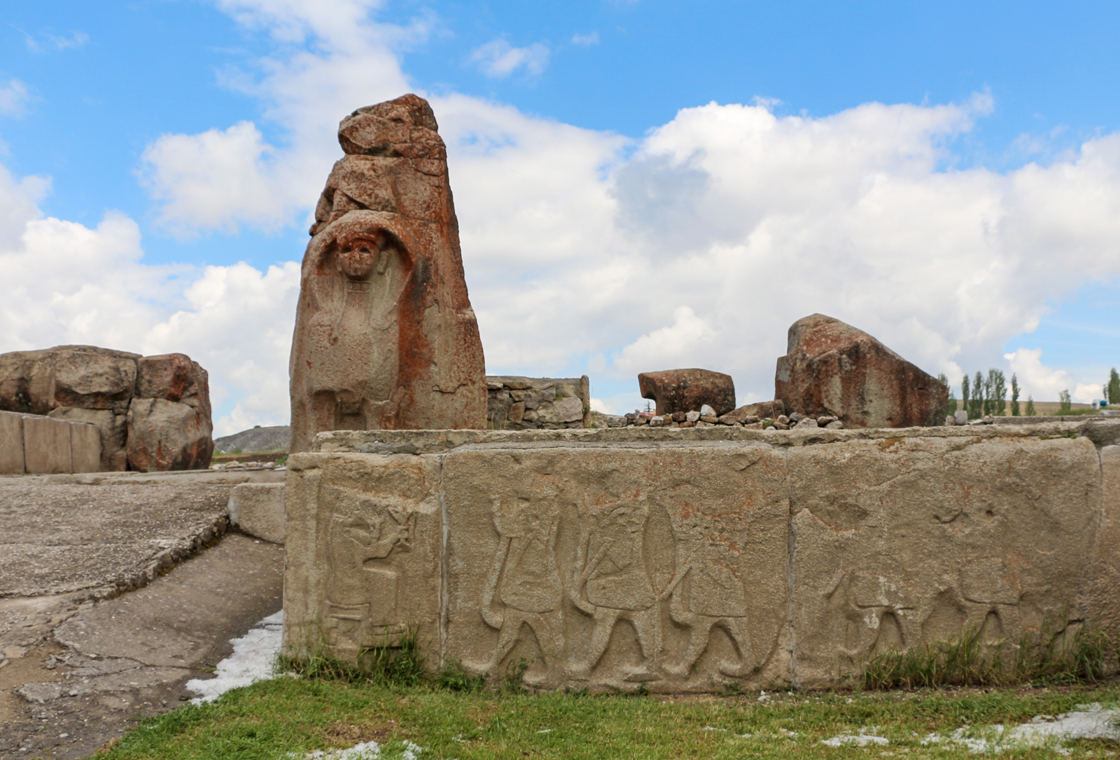
And closer up with example of favourite cup;
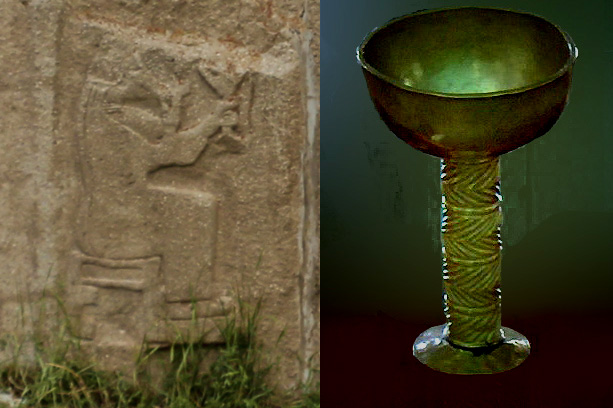
And one more of the filial pictures involving deers.
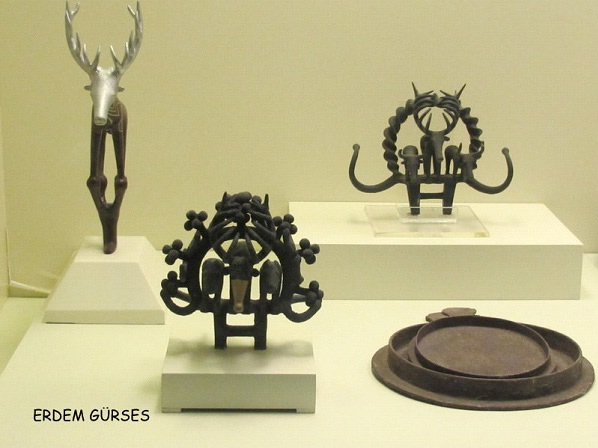
Not like you dears seem to care....
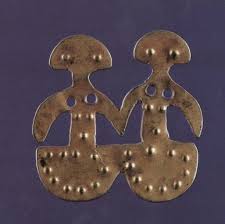

And closer up with example of favourite cup;

And one more of the filial pictures involving deers.

Not like you dears seem to care....

edit on Kpm1130323vAmerica/ChicagoSaturday1930 by Kantzveldt because: (no reason given)
a reply to: mblahnikluver
Not many have and not many are redpilled on a 4,500 (at least) year old cult of the (nice) matrix...
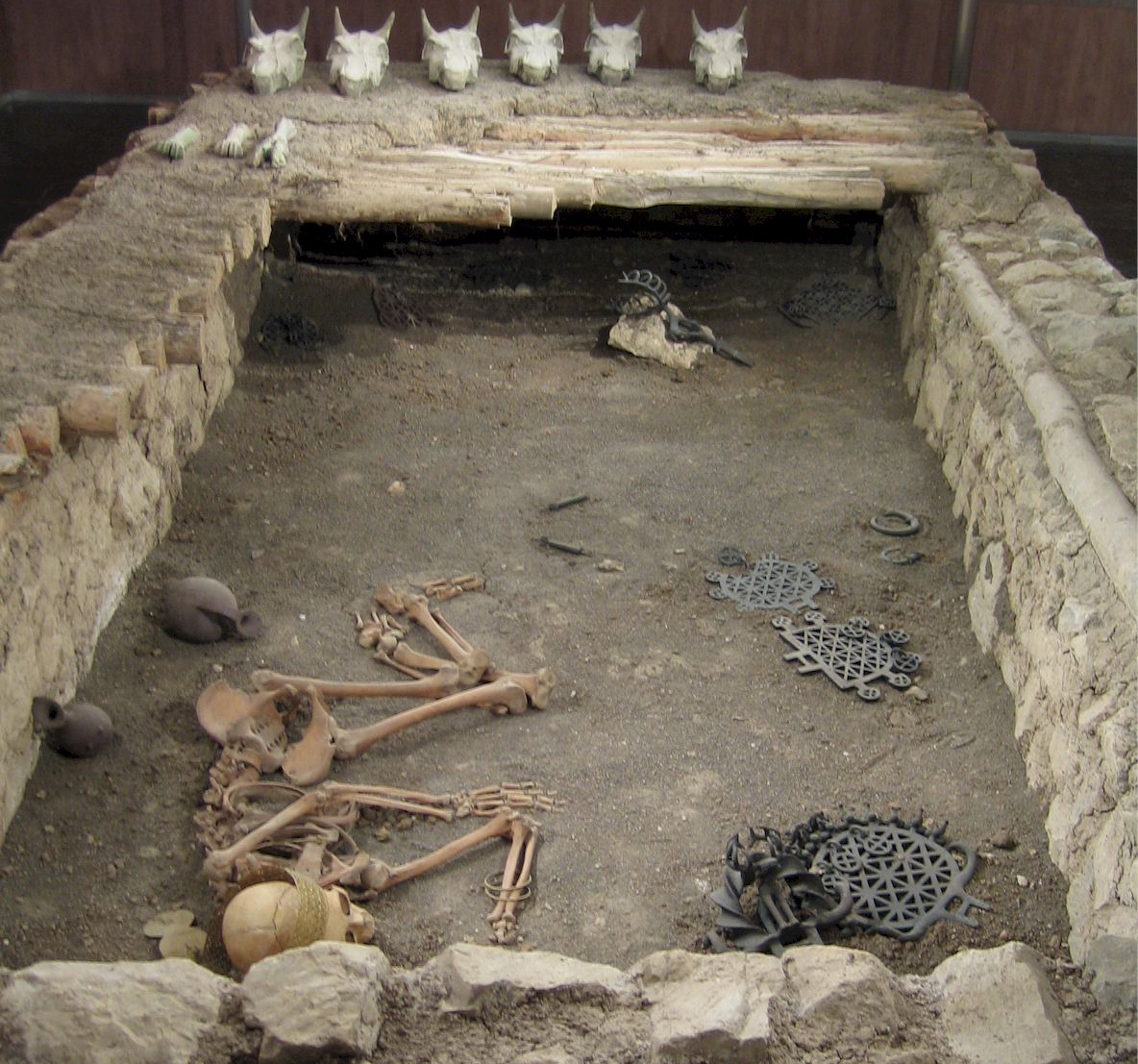
Not many have and not many are redpilled on a 4,500 (at least) year old cult of the (nice) matrix...

edit on Kpm1130323vAmerica/ChicagoSaturday1930 by Kantzveldt because: (no reason given)
new topics
-
Ukraine halts transit of Russian gas to Europe after a prewar deal expired
Political Conspiracies: 3 hours ago -
Welp...Happy New Year!!
General Chit Chat: 5 hours ago -
Vehicle Strikes people in New Orleans
Mainstream News: 6 hours ago -
The Hand that Rocks the Cradle - Labour Plans “diversities of our society” Curriculum Change
Regional Politics: 6 hours ago
top topics
-
Vehicle Strikes people in New Orleans
Mainstream News: 6 hours ago, 18 flags -
The Hand that Rocks the Cradle - Labour Plans “diversities of our society” Curriculum Change
Regional Politics: 6 hours ago, 5 flags -
Welp...Happy New Year!!
General Chit Chat: 5 hours ago, 5 flags -
SCOTUS Chief Justice JOHN ROBERTS Ends 2024 Describing His Fears for Safety of U.S. Judges.
Above Politics: 15 hours ago, 4 flags -
Ukraine halts transit of Russian gas to Europe after a prewar deal expired
Political Conspiracies: 3 hours ago, 4 flags
22

